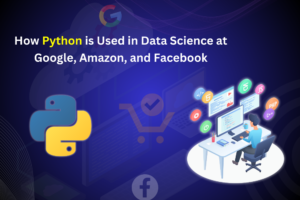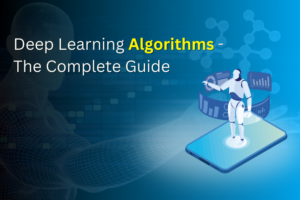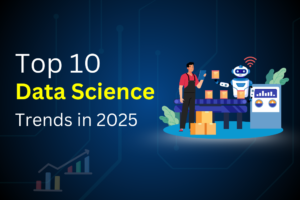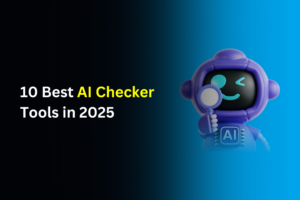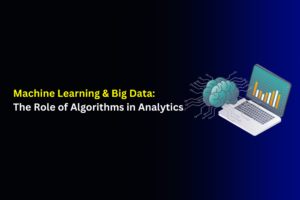Algorithms are at the heart of how we make sense of big data today. They help us break down massive amounts of information into patterns and insights we can actually use. Whether it’s for business decisions, healthcare, or even social media, algorithms are doing a lot of the heavy lifting behind the scenes. And with machine learning, they’re getting even smarter. However, there are difficulties, such as ensuring that they are equitable and effective. Let’s explore how algorithms shape big data analytics and what the future might hold.
Key Takeaways
- Algorithms are essential for analyzing and understanding big data.
- Machine learning has made algorithms smarter and more adaptable.
- Different types of algorithms, like classification and clustering, serve unique purposes in big data.
- Challenges include scalability, fairness, and balancing speed with accuracy.
- Explainable AI and the incorporation of quantum computing are examples of future advancements.
Understanding the Role of Algorithms in Big Data
Algorithms play a crucial role in big data by processing, analyzing, and extracting valuable insights from massive datasets. They enable efficient data sorting, pattern recognition, and predictive modeling, helping businesses and researchers make data-driven decisions. Machine learning algorithms, for example, enhance big data applications by identifying trends and automating complex tasks. From recommendation systems to fraud detection, algorithms drive innovation by transforming raw data into actionable intelligence, making them essential for handling the scale and complexity of big data.
How Algorithms Process Massive Data Sets
Algorithms play a central role in making sense of the overwhelming amount of information generated daily. Finding patterns, trends, and connections that would otherwise go unnoticed, they sort through enormous datasets. Imagine trying to analyze millions of rows of data manually—it’s not feasible. Algorithms automate this process, breaking down the data into manageable chunks and applying mathematical models to interpret it.
Here’s how they work:
- Data Input: Raw data is fed into the system, often requiring preprocessing to clean and organize it.
- Processing: The algorithm applies pre-defined rules or models to analyze the data.
- Output: Results are generated, whether it’s a prediction, classification, or insight.
Without algorithms, big data would just be a chaotic pile of numbers and text.

The Evolution of Algorithms in Data Analytics
Algorithms have come a long way. They were simple, rule-based systems in the beginning, suited for simple tasks. Over time, they’ve evolved into complex, self-learning systems thanks to advancements in Big Data and machine learning. Today’s algorithms are more adaptable and capable of increasing their performance as they analyze additional data.
Key milestones in their evolution include:
- Rule-Based Algorithms: Focused on simple, predefined rules.
- Statistical Models: Introduced probabilities and predictions.
- Machine Learning Algorithms: These learn and adapt without explicit programming.
- AI-Driven Models: Combining deep learning and neural networks for advanced insights.
This evolution has expanded their application across industries, from healthcare to retail.
Key Characteristics of Effective Algorithms
Not all algorithms are created equal. Effective ones share specific traits that make them reliable and efficient:
- Scalability: They handle increasing amounts of data without losing performance.
- Accuracy: Results are precise and meaningful.
- Efficiency: They process data quickly, saving time and resources.
- Adaptability: Adaptable to new information and evolving circumstances.
Bold algorithms are the backbone of big data analytics, converting raw information into meaningful insights. Without them, the potential of big data would remain untapped.
The Intersection of Machine Learning and Algorithms
Machine learning (ML) is the engine behind many big data breakthroughs. At its core, ML uses algorithms to identify patterns and make predictions, often with minimal human intervention. These algorithms are designed to adapt and improve as they process more data, making them a perfect match for the ever-growing world of big data. By combining ML with big data, industries can uncover trends and insights that were previously hidden in massive datasets. For instance, the integration of machine learning with big data has transformed industries by making it easier to extract meaningful information from complex datasets.
Supervised vs. Unsupervised Learning in Big Data
Supervised and unsupervised learning are the two primary forms of machine learning that are applied to big data. Supervised learning relies on labeled datasets to train models to make predictions. Consider it similar to educating a toddler using flashcards: “This is a dog,” “This is a cat.” Unsupervised learning, on the other hand, is more akin to giving a child a box of toys and observing how they organize them; it operates without labels and allows the algorithm to discover patterns on its own. Each method has its strengths: supervised learning excels in tasks like fraud detection, while unsupervised learning is great for uncovering hidden customer segments.
Real-World Applications of Machine Learning Algorithms
Machine learning algorithms are everywhere. They’re in the recommendation systems that suggest what to watch next on streaming platforms, the fraud detection systems used by banks, and even in medical diagnostics. Here’s a quick look at some common applications:
- Predictive Analytics: Predicting weather patterns, market values, or even sales.
- Natural Language Processing: Provide the language translation and chatbots.
- Image Recognition: Identifying objects in photos or diagnosing diseases from medical scans.
Machine learning isn’t just a tool; it’s reshaping how we approach problems, making solutions faster, smarter, and more precise.
Types of Algorithms Powering Big Data Insights
Big data insights are powered by various types of algorithms, each serving a unique purpose in data processing and analysis:
- Machine Learning Algorithms – These include supervised, unsupervised, and reinforcement learning models used for predictive analytics, anomaly detection, and recommendation systems.
- Clustering Algorithms – Such as K-Means and DBSCAN, these group similar data points to uncover hidden patterns in large datasets.
- Classification Algorithms – Like Decision Trees, Random Forest, and SVM, these categorize data into predefined labels, essential for spam detection and sentiment analysis.
- Regression Algorithms – Used in forecasting and trend analysis, including Linear and Logistic Regression, helping businesses make data-driven decisions.
- Association Rule Learning Algorithms – Such as Apriori and FP-Growth, these identify relationships between variables, commonly used in market basket analysis.
- Natural Language Processing (NLP) Algorithms – Powering sentiment analysis, chatbots, and text mining by understanding and processing human language.
- Graph Algorithms – Like PageRank and Shortest Path, used in social network analysis, recommendation engines, and web search optimization.

Classification Algorithms for Predictive Analytics
Classification algorithms are all about sorting data into categories. For instance, they may use historical data to forecast a customer’s likelihood of purchasing a product. These algorithms are widely used in areas like fraud detection, customer segmentation, and even medical diagnoses. They excel at making sense of historical data to predict future outcomes. Neural networks, support vector machines (SVMs), and decision trees are a few common categorization methods.
Here’s a quick comparison of some common classification algorithms:
| Algorithm | Strengths | Challenges |
| Decision Trees | Easy to interpret | Prone to overfitting |
| Support Vector Machines | Works well with small datasets | Computationally expensive |
| Neural Networks | Handles complex patterns | Requires large datasets |
Clustering Techniques for Data Segmentation
Clustering is like organizing your closet. Instead of categories, It organizes data items according to commonalities. Without being aware of these groupings in advance, it might, for example, group clients with comparable buying patterns. Two popular techniques are hierarchical clustering and K-means. These methods are very helpful in social network analysis, picture identification, and marketing.
Key steps in clustering include:
- Choosing the number of clusters.
- Using similarity to group data points into clusters.
- Iteratively refining the groups until they make sense.
Clustering doesn’t require labeled data, making it ideal for exploring unknown patterns in massive datasets.
Optimization Algorithms for Enhanced Decision-Making
Among a variety of options, optimization algorithms assist in identifying the optimal one.They’re essential in logistics, supply chain management, and financial modeling. For example, they can minimize delivery costs or maximize profit margins. The preferred methods include algorithms such as gradient descent, genetic algorithms, and linear programming.
A few real-world uses include:
- Scheduling tasks efficiently in manufacturing.
- Using cloud computing to allocate resources.
- Optimizing machine learning models to achieve more efficiency.
Optimization is about balancing trade-offs—speed, accuracy, and cost. It’s not perfect, but it’s indispensable for making informed decisions in complex scenarios.
Challenges in Implementing Algorithms for Big Data
Scalability Issues in Algorithm Design: Handling the massive scale of big data is no small feat. Data that increases rapidly in volume, diversity, and velocity is typically difficult for algorithms to handle, which can result in performance snags and higher computational expenses. To address these issues, developers focus on creating distributed algorithms and leveraging parallel processing techniques. Even these solutions, meanwhile, have their own set of challenges, such as making sure that data is consistent among nodes.
Balancing Accuracy and Efficiency: One of the trickiest parts of designing algorithms for big data is finding the right balance between accuracy and efficiency. For real-time applications, highly accurate algorithms may be impracticable due to their high computing resource requirements. On the flip side, faster algorithms might sacrifice precision, leading to suboptimal insights. Striking this balance requires extensive testing and fine-tuning to meet specific use cases. Often, hybrid approaches are employed, combining elements of both to achieve a workable compromise.
Ethical Considerations in Algorithmic Decisions: Algorithms don’t just crunch numbers—they also influence decisions that can have far-reaching consequences. This raises ethical questions about bias, transparency, and accountability. For instance, if an algorithm disproportionately favors or disadvantages certain groups, it can lead to unfair outcomes. In order to address these issues, organizations must make sure that their algorithms are in compliance with social norms and ethical standards, audit algorithms on a regular basis, and incorporate fairness measures into their design. Big data presents significant challenges, primarily due to its volume, variety, and velocity, which hinder accessibility and usability. Organizations must address these issues if they want to take advantage of the potential presented by big data.
Future Trends in Algorithms and Big Data Analytics
The Rise of Explainable AI in Machine Learning: As machine learning continues to grow, there’s a huge focus on making these systems more understandable. Explainable AI (XAI) is all about making the decisions of complex algorithms clear to humans. In sectors like healthcare and banking, where choices can have major repercussions, this is particularly crucial. Transparency is no longer only a desirable attribute; it is now a need. Companies are using XAI to build trust and ensure compliance with regulations.
Integration of Quantum Computing with Algorithms: Quantum computing isn’t just a buzzword anymore—it’s slowly becoming a reality. These devices are capable of processing data at previously unthinkable speeds. For big data, this means algorithms that can analyze massive datasets in seconds instead of hours. Researchers are already working with quantum algorithms for optimization and machine learning applications. While we’re not there now, the potential is huge.
Automated Algorithm Design for Big Data: Imagine algorithms that can design themselves. Automated machine learning (AutoML) is making this possible. It simplifies the process of creating models, saving time and reducing errors. Here’s how it’s changing the game:
- Efficiency: AutoML tools can test and select the best algorithms faster than humans.
- Accessibility: Even non-experts can use these tools to build effective models.
- Scalability: They work well with large datasets, which is perfect for big data.
The future of algorithms isn’t just about being smarter. It’s about being faster, clearer, and more adaptable to the challenges of big data.
For more on how current big data trends are shaping analytics strategies, check out the latest developments in the field.
The Impact of Algorithms on Business Intelligence
Driving Data-Driven Decision Making: Algorithms are the unsung heroes behind most modern business decisions. They scan through mounds of data, revealing patterns that would take people decades to notice. By automating analysis, businesses can make quicker and more informed decisions. For instance, sales teams can predict customer behavior based on historical purchase data, while supply chain managers can optimize inventory levels using predictive models. This shift toward data-backed decisions isn’t just a trend—it’s becoming the standard.
Enhancing Customer Insights Through Algorithms: Understanding customers is no longer a guessing game. Algorithms analyze behavioral data, social media interactions, and even website clicks to create detailed customer profiles. These profiles help organizations adjust their marketing strategy, ensuring they convey the correct message to the right target. For example, recommendation systems, like those used by streaming platforms, are powered by algorithms that forecast what a user would appreciate next. The result? Happier customers and better engagement.
Streamlining Operations with Predictive Models: Algorithms also excel in operational efficiency; predictive models may predict equipment breakdowns, allowing businesses to plan maintenance before a breakdown happens. They can also optimize delivery routes, saving time and reducing costs. Here’s a quick look at how algorithms improve operations:
- Inventory Management: Predicting stock needs based on past trends.
- Scheduling: Better use of available resources.
- Risk Assessment: Identifying potential issues before they escalate.
Algorithm integration into business intelligence is about turning unprocessed data into insights that can be used to achieve success, not only about calculating numbers.
By using AI algorithms, companies are not only staying competitive but also uncovering opportunities that might otherwise go unnoticed.
Data Preprocessing: The Foundation for Effective Algorithms
Cleaning and Normalizing Big Data
Before any analysis can happen, raw data needs some serious tidying up. Data cleaning is all about removing errors, duplicates, or inconsistencies that can mess up your algorithms. For example, imagine trying to analyze sales data where “$100” is written as “100” in some entries—your results would be all over the place. Normalizing the data ensures that everything is on the same scale, which is especially important when working with algorithms that are sensitive to variations, like machine learning models.
Key steps in cleaning and normalizing data:
- Remove duplicates: Avoid counting the same data twice.
- Handle outliers: Decide whether to keep, modify, or remove extreme values.
- Standardize formats: Make sure dates, currencies, and units are consistent.
Feature Selection for Machine Learning Models
Not all data is created equal—some features carry more weight than others. Feature selection is the process of choosing which variables are most relevant to your study. This phase may dramatically enhance both the speed and accuracy of your models. For instance, if you’re predicting house prices, factors like location and square footage will matter way more than the color of the walls.
Common methods for feature selection:
- Filter methods: Sort features according to statistical tests.
- Wrapper methods: Test subsets of features to find the best combination.
- Embedded methods: Select features during the model training process.
Handling Missing Data in Large Data Sets
Missing data is inevitable, especially in big data projects. But ignoring it isn’t an option—it can skew your results or even crash your algorithms. Strategies for dealing with missing data include:
- Filling in the gaps: Use techniques like mean, median, or mode substitution.
- Predictive methods: Estimate missing values based on other variables.
- Dropping incomplete records: Sometimes, it’s better to lose a little data than to risk inaccuracies.
Data preprocessing isn’t just a chore; it’s what makes algorithms work as they should. Skipping this step is like trying to build a house on a shaky foundation—you’re setting yourself up for failure.
For more about turning raw data into something usable, check out our courses Data science courses in Pune
Wrapping It Up
So, that’s the gist of it—algorithms are pretty much the unsung heroes of big data analytics. They’re the ones doing the heavy lifting, sorting through mountains of information to find patterns, trends, and answers. All that information would simply be there without them. But with the right algorithms in place, businesses, researchers, and even everyday folks can make sense of it all. It’s not magic—it’s math and logic working together. And honestly, it’s kind of amazing how much they can do. Therefore, keep in mind that algorithms are what make big data possible the next time you hear about it.
Frequently Asked Questions
What are algorithms, and why are they vital in big data?
Algorithms are step-by-step instructions that help computers solve problems or process information. In big data, they are crucial because they analyze massive amounts of data quickly and find useful patterns or insights.
How do machine learning algorithms function with huge data?
Machine learning algorithms learn from data to create predictions or choices. With big data, these algorithms use large amounts of information to improve their accuracy over time.
Which kinds of algorithms are frequently employed in big data analytics?
Some common types include classification algorithms for predicting outcomes, clustering algorithms for grouping data, and optimization algorithms for making better decisions.
What challenges come with using algorithms in big data?
Challenges include making sure algorithms can handle large data sets, balancing speed and accuracy, and addressing ethical concerns like fairness and privacy.
How are businesses benefiting from algorithms in big data?
Businesses use algorithms to make smarter decisions, understand their customers better, and improve operations by predicting future trends.
What is data preparation, and why is it crucial for algorithms?
Data preprocessing involves cleaning, organizing, and preparing data so algorithms can work effectively. Without it, the results might be inaccurate or unreliable.

